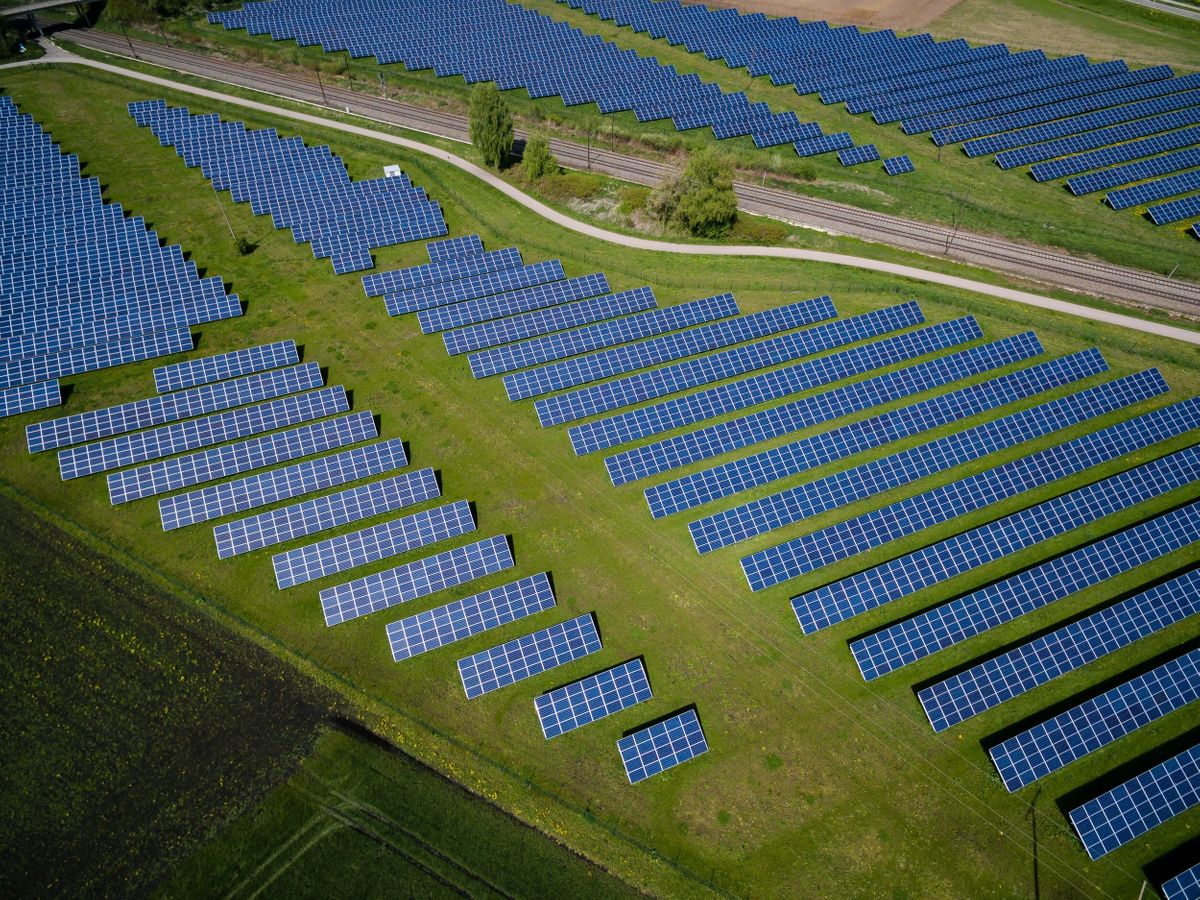In a previous blog, we talked about battery storage for on-site solar arrays. Utilities are also considering storage at a larger, grid scale. Let’s explore the benefits of utility-scale solar and battery storage.
Utility-scale energy storage (often through batteries) is usually paired with utility-scale renewable energy projects, so let’s talk about those first. Utility-scale solar installations are much larger than residential or even commercial arrays (often measured using MW instead of KW), and usually send the power produced directly to the electricity grid rather than to individual consumers. Utilities then usually enter into power purchase agreements (PPAs) with the developers of these large scale projects to ensure the power produced is sold. There are also permitting, siting, and operating regulations that need to be followed, and local safety guidelines to ensure a project is built to the correct standards. This is a great option for electric grids since there’s a movement to clean up power production instead of relying only on fossil fuel sources like coal for electricity. They also contribute to the resiliency of an electric grid because they help diversify electricity sources so if a power plant is pulled offline (or down because of a natural disaster), there are other ways to power in emergencies.
One of the challenges with renewable energy like solar and wind is that there is often a peak production period and a period when electricity production is lower (with solar, for example, there’s abundant energy available during the day, but overnight, production stops because the sun’s not shining). This is one time when utility-scale storage can come in handy in conjunction with a utility-scale solar project. Because there is a predictability to the schedule of solar energy production, a battery can store excess energy produced during the day and then distribute that energy overnight when the grid would otherwise have to use electricity produced using fossil fuel. This lowers the environmental costs of electricity, replacing use that would otherwise be accommodated by fossil fuels. Batteries can also provide financial savings, or at least financial consistency, allowing for more fixed pricing.
Remember a few articles ago when we mentioned peaker plants - the dirtier-than-normal coal plants that only turn on for a few days during the summer when demand is particularly high? Utility-scale batteries, if large enough, can act as that excess power for those high-demand days, cutting the need for peaker plants. This also helps clean up the grid, and makes the transition away from fossil fuels quicker and easier. Using renewable energy during these high demand times instead of coal-powered electricity from these peaker plants can also help improve air quality and create healthier living environments for those located in areas near the facilities.
A shift to cleaner energy sources is a great thing, and along with cleaner energy comes energy efficiency. Connect with the team at Fusebox to learn more about how you can manage your utility data and be more efficient with your resources!
Check out Laurel’s other blog posts!
- Storing Solar Power
- Managing Humidity In Our Buildings
- DEMANDing Reductions
- Electricity in the Summer
- Demand vs. Consumption - Electricity is Complicated!
- Better Indoor Air Quality Means Happier (and Healthier) Occupants
- Who Decides the Utilities’ Rates?
- What is a Regulated vs. Deregulated Utility?
- Incentives for Solar and Renewables
- On-Site Solar vs. Community Solar - What Should You Do?
- Energy Benchmarking Is Becoming Mainstream
- The Cost of Water is Increasing…Now What?
- Gift-Giving For The Energy and Sustainability-Minded
- Water Reuse is Water Conservation!
- Tracking and Reducing Water Use in Your Building
- Teachers as Energy Conservation Champions in Schools
- Plug Loads and Commercial Office Tenants
- Communicating Energy Conservation With Residential Tenants
- Water, Waste, and Cleaning Of Buildings In A Post-COVID World
- Energy Management In Buildings In A Post-COVID World

